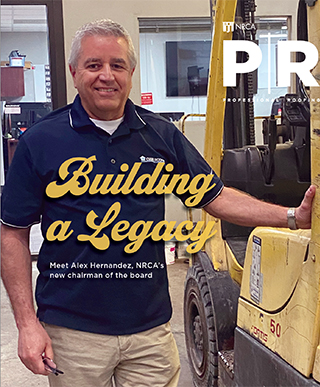Earlier this year, a group of NRCA leaders met with a team of senior executives from our insurance partner, CNA, to review NRCA's Group Safety Program, now in its 45th year of operation, which is available to roofing contractors.
It's always an interesting meeting, especially because CNA has significantly improved its risk control and claims management operations. The company is collecting much better data and has taken a zero-tolerance policy toward fraudulent claims, among other things.
However, the roofing industry still has too many accidents and injuries. At the top of the list—still—is falls. What we have learned is there have been fewer falls from roof edges but more through openings (or bad decks) and from ladders. Smart contractors—at CNA's urging—are taking an aggressive, proactive approach to fall protection with great success.
At the meeting we also learned opioids, mostly in the form of prescription painkillers, are becoming a huge problem in workers' compensation claims. Drugs such as OxyContin® are relatively easy to get and can dramatically affect a worker's ability to avoid injury.
In addition, we learned fleet and automobile claims are on the rise and 27 percent of vehicle accidents are attributable to the driver texting while driving. There should be an easy fix, but there isn't. The best practice is for employers to prohibit drivers from using cell phones on company time or in company cars.
And we learned 39 percent of accidents and injuries occur during the first year of employment. There is no clearer suggestion that training matters and needs to be continually provided. The best contractors conduct regular safety meetings, including frequent toolbox talks, and make sure safety training is reinforced throughout the organization.
With more owners demanding accident-free projects, professional roofing contractors are working hard every day to make sure their jobs are safe and their employees know safety matters.
And yes, that's easier said than done. But there are two important lessons from all this: Safety requires constant attention, and it pays. We're getting much safer as an industry, but we can never take safety for granted. And thanks to our friends at CNA, we continue to receive better information to help develop the best safety programs.
Bill Good is NRCA's CEO.



